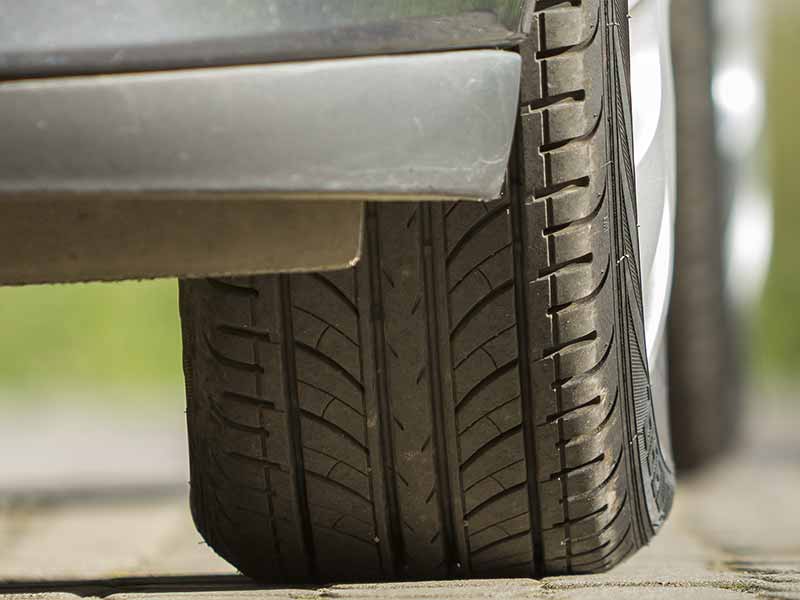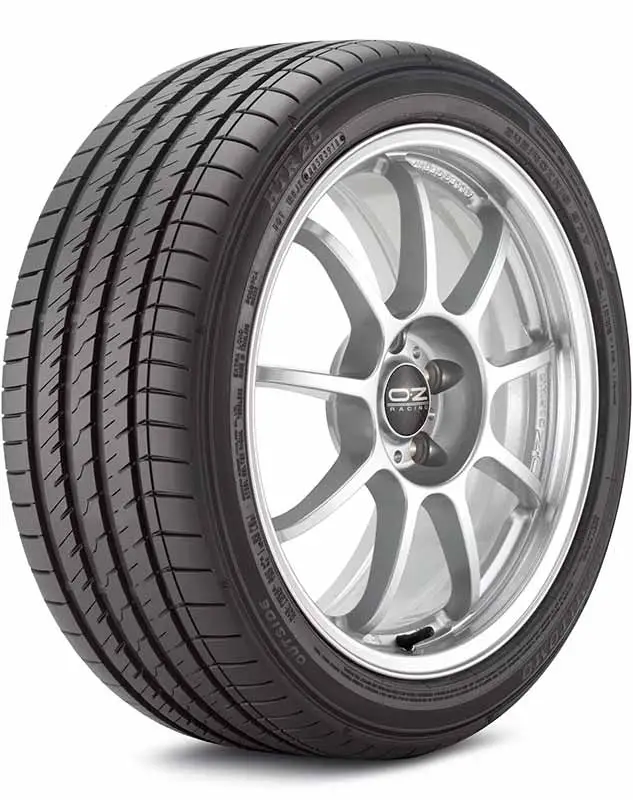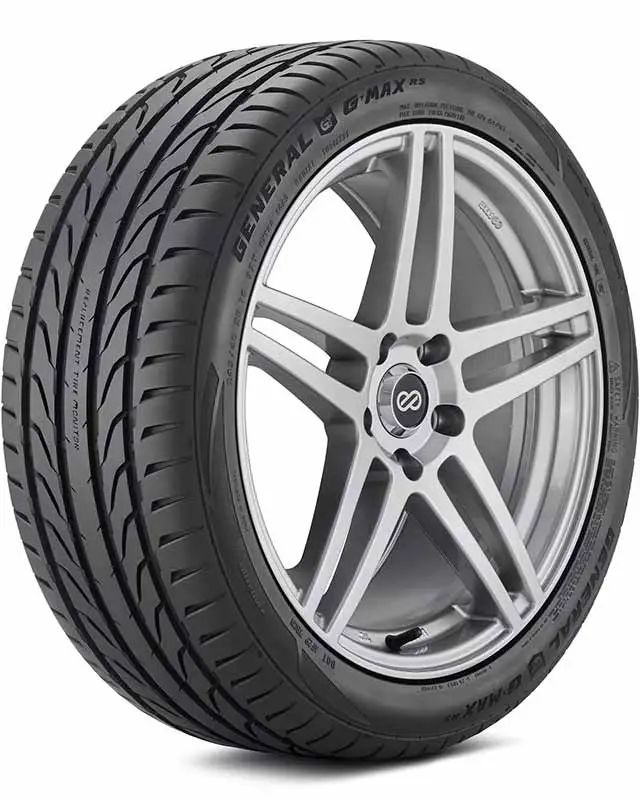Are you hearing strange tire noise or feeling like your ride’s more bumpy than it should be? Do you see uneven wear on your front tires and wonder what’s going on? You might be dealing with a common but often overlooked problem: tire cupping.
What Causes Cupping On Front Tires?
Cupping on front tires is typically caused by unbalanced tires, underinflation, misaligned wheels, or worn suspension components. It’s a clear sign of some part of your vehicle’s system not functioning as it should.
In this article, we’ll explore what causes tire cupping, especially on the front tires, whether it’s a cause for concern, and how to fix and prevent it. Additionally, we’ll delve into understanding tire wear patterns to help you better maintain your tires and ensure a smooth, safe ride.
Let’s take a closer look.
Understanding Tire Cupping On Front Tires
When we talk about tire cupping, we’re referring to the uneven wear that shows up as a series of dips in the tread of your tire. It’s called ‘cupping’ because these worn-out parts often look like little cups or scallops scooped out of the rubber.
Tire cupping is a specific kind of uneven tire wear. Now, ‘tire wear’ is just a fancy term that means the gradual loss of material from your tire’s surface as you drive. If everything is working well, this wear should be even across your tire. But when things go wrong, like your car’s alignment being off or your tires not being inflated properly, you get uneven tire wear. This uneven wear can lead to tire scalloping, or cupping.
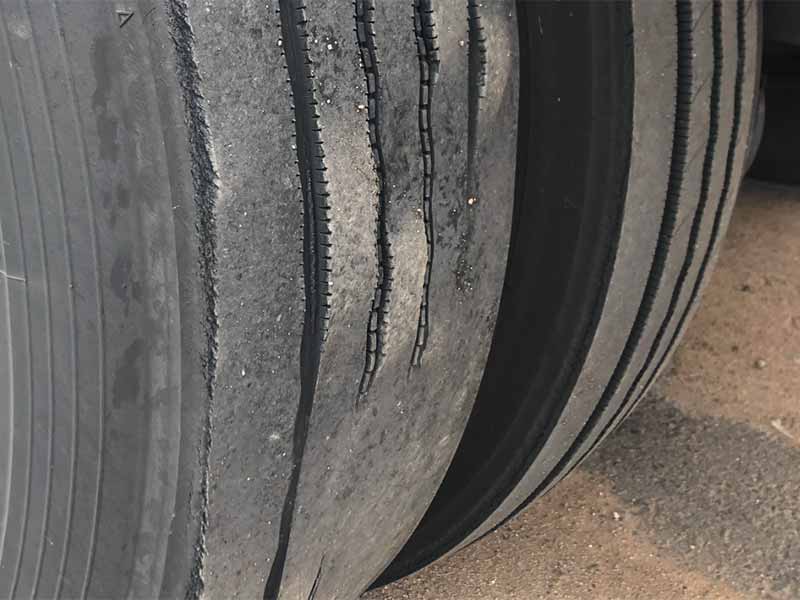
How Does Cupping Affect Your Driving?
This may seem like a minor issue, but it’s actually a big deal. Why? Well, because the condition of your tires affects almost every aspect of your driving experience!
If your tire is cupped, you’re going to feel it in your steering wheel. It’ll feel shaky and unsteady, especially when you’re driving at high speeds. This is because those little cups in your tire are causing it to bounce around a bit as it rolls along the road.
And you’re going to hear it too. Tire noise is another common symptom of cupping. The uneven wear of your tire causes it to make a humming or growling sound when you’re on the move. It’s like your tire is trying to sing you a not-so-pleasant song about how it needs some TLC!
Where Can Cupping Occur On Front Tires?
Okay, so now you might be wondering where this cupping happens. Well, it can appear on any tire, but we’re particularly focusing on the front tires for this discussion. The front tires can show cupping on either the inside edge or the outside edge.
- Front Tires Cupping On Outside Edge: When the outside edge of your front tires shows cupping, this usually indicates a problem with specific parts of your car’s suspension system. Things like worn-out shock absorbers can lead to this kind of cupping.
- Front Tires Cupping On Inside Edge: On the other hand, when cupping appears on the inside edge of your front tires, it’s often a sign that your wheels might be misaligned. This is why regular wheel alignments are so important – they help prevent problems like this from happening.
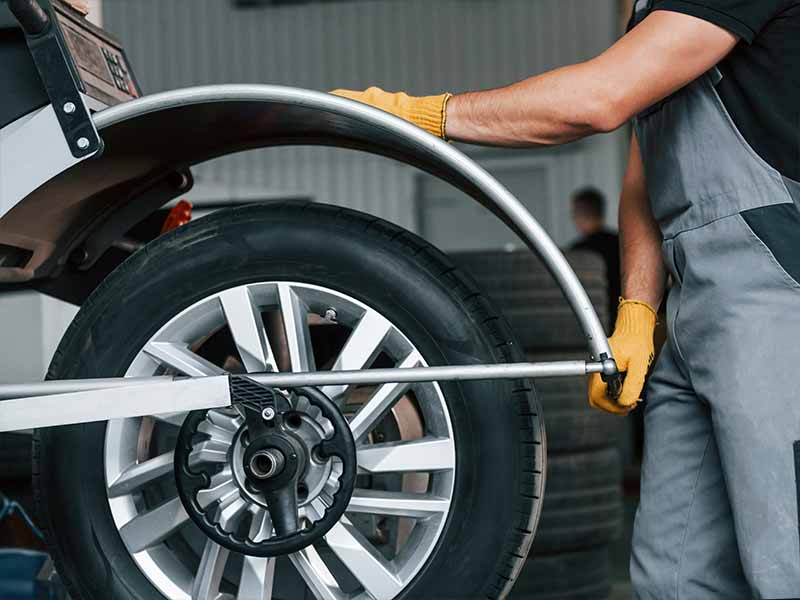
Causes of Tire Cupping
We’ve talked about what tire cupping is, so now it’s time to play detective and look at what causes this pesky problem. The most common culprits? Underinflated tires, misaligned wheels, and worn suspension components or bent rims. But don’t worry, it’s not as complicated as it sounds. Let’s break it down.
Out Of Balance Tires
Balanced tires ensure that your car moves smoothly and consistently on the road. But when tires are out of balance, things can get bumpy. Each tire and wheel assembly has a specific balance point that needs to be maintained for a smooth ride. Sometimes, due to irregular wear, loss of a wheel weight, or even a new puncture repair, the weight distribution around a tire can become uneven, throwing the tire out of balance.
This imbalance can cause the tire to bounce or wobble as it rolls down the road, leading to what’s often described as a “choppy” ride. These repeated bounces or wobbles mean the tire is not making consistent contact with the road. Instead, it’s hitting the road at the high spots with each rotation. This uneven contact leads to an uneven wear pattern on the tire, known as cupping.
Under-inflated Tires
The story often begins with the pressure of the tires. Yes, it’s as simple as that. Tires need to be properly inflated to maintain even contact with the road. But when your tires are underinflated, they can’t keep up with the demands of the road.
The low tire pressure means that the tire’s structure can’t hold up as well, so parts of it start to bulge out more than they should. This leads to some parts of your tire contacting the road more than others, leading to uneven wear. So, the next time you’re fueling up your car or truck, take a couple of minutes to check your tire pressure.
Misaligned Tires
The next suspect on our list is misaligned tires. When your wheels are not aligned properly, they’re not pointed in exactly the right direction. It might be a slight misalignment, but over time, it can cause major tire wear issues.
Misaligned wheels tend to make your tires wear unevenly. One side may wear out more than the other, leading to that scooped-out, cupping pattern we’ve been talking about. Regular wheel alignment checks are key to preventing this.
Worn Suspension Components and Bent Rims
Lastly, we can’t ignore the possibility of worn suspension components and bent rims. Think of your car’s suspension system as a team that works together to keep your ride smooth. But if one player is out of the game, the whole team suffers.
For instance, when your shock absorbers are worn out, they can’t absorb road shocks like they’re supposed to. This can cause your tires to bounce up and down on the road, leading to those small patches of heavy wear we know as tire cupping. Similarly, a bent rim can throw off your tire’s balance, causing it to wear unevenly.
Is Tire Cupping Dangerous?
So, we’ve figured out what tire cupping is and what causes it. Now let’s answer the million-dollar question: is tire cupping dangerous? The simple answer is – yes, it can be. But why? It’s because cupping affects your tire’s tread depth, contact with the road, and overall tire life. Let’s dive a bit deeper.
Impact on Tire’s Tread Depth and Road Contact
Tires are like the shoes of your car, and just like how you need the soles of your shoes to be even for a smooth walk, you need your tires’ tread to be even for a smooth ride. The tread depth of your tires is super important for safe driving, especially in challenging weather conditions.
When your tires are cupped, the tread depth becomes uneven. This can seriously impact your car’s grip on the road and increase the chances of hydroplaning in wet conditions. It also affects your car’s ability to stop quickly when you hit the brakes. It’s a bit like trying to run in shoes that have holes in the soles – not the safest situation, right?
Influence on Tire Life
Besides being a safety issue, tire cupping also affects the life of your tires. Just like any other type of uneven tire wear, cupping causes your tires to wear out faster in certain areas. This leads to premature tire wear, which means you’ll have to replace your tires sooner than expected. And we all know, buying new tires isn’t exactly cheap. So, irregular tire wear like cupping isn’t great for your wallet either.
Overall, Is It Dangerous?
Overall, while tire cupping may not cause an immediate accident, it gradually decreases the performance and safety of your vehicle. It’s like a small leak in a boat. It may not sink the boat right away, but over time, it can cause serious problems. The uneven wear pattern from cupping can make your ride less comfortable, increase your chances of tire-related accidents, and shorten your tire life.
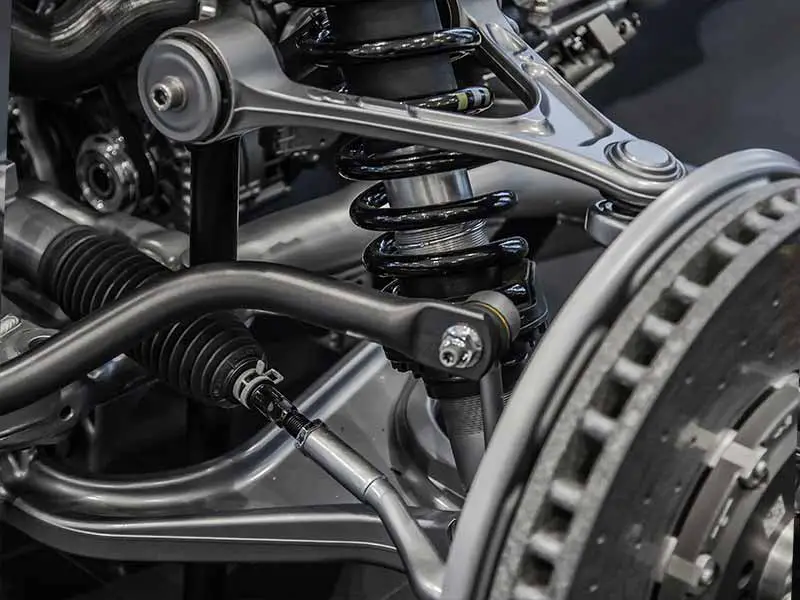
How to Fix and Prevent Tire Cupping
Alright, so now you’re probably thinking, “Okay, I get it. Tire cupping is bad news. But what can I do about it?” Well, you’re in luck! There are ways to fix and prevent tire cupping. From regular maintenance to picking the right tires, let’s walk through the steps to keep your tires cup-free.
Importance of Regular Maintenance
First things first, keep up with regular maintenance. Your vehicle isn’t just a hunk of metal; it’s a complex machine that needs care and attention.
Tires Balanced
Keeping your tires balanced is key. Imbalanced tires can lead to uneven wear and tire cupping. Whenever you get new tires or if you feel some vibrations while driving, get your tires checked for balance.
Wheel Alignment Checks
Regular wheel alignment checks are crucial. Misaligned wheels don’t just lead to cupping, they can cause a bunch of other tire wear issues too. So, make sure your wheels are aligned correctly and regularly.
Quality Tires vs Cheap Tires
Next up is your choice of tires. The saying “you get what you pay for” holds true for tires too.
Cheap tires may save you some cash upfront, but they may not hold up as well to the demands of the road. This doesn’t mean that all expensive tires are great and all cheap tires are bad. The point is to consider the quality and not just the price. Good quality tires tend to resist cupping better than their cheaper counterparts.
Maintenance of Suspension Components
Remember, your vehicle’s suspension system plays a big role in preventing tire cupping. Regular checks and maintenance of suspension components are essential.
If your shock absorbers are worn out, replace them. If other parts of your suspension system are damaged, get them repaired. Regular suspension checks can help you spot and fix these problems before they lead to tire cupping.
Tire Pressure Management
Last, but definitely not least, manage your tire pressure. Remember, underinflated tires can lead to uneven tire wear and cupping. So, check your tire pressure regularly and keep them inflated as recommended by your vehicle’s manufacturer.
Resources
Below are some links you may find helpful when learning about tires
Final Thoughts
Tire cupping is a type of uneven wear that manifests as a scalloped or wavy pattern on your tires, primarily caused by underinflated tires, misaligned wheels, or worn-out suspension components. Not just an annoying source of tire noise, it’s a sign that your vehicle needs attention. It can negatively impact your driving experience and more importantly, your safety on the road.
But there’s good news: with regular maintenance, proper tire pressure management, careful wheel alignment, and attention to your vehicle’s suspension system, you can avoid tire cupping. Understanding your tire wear patterns, including recognizing signs of cupping, can help you maintain your tires’ health and prolong their life. So keep a close eye on your tires because, at the end of the day, a smooth ride and your safety are what truly matter.
Good luck and happy motoring.
